On August 16, 2018, I visited the Warner Bros studio lot in Burbank California to visit the editing room of Aquaman. The film had just held a test screening the previous week, and director James Wan and editor Kirk M. Morri were hard at work implementing changes and finishing the film. We got to see over 20 minutes of footage and talk to the filmmaker about the latest DC Universe movie.
Walking into the Aquaman production office, one thing was evident — they are on a sprint to finish this movie. Usually, offices like these are scrubbed of spoilers, especially when a group of the press is visiting. All the signage in the office used the film’s code name “Ahab,” as you might expect. But some parts of the office were in full work mode, not caring who noticed the details. For instance, on the wall was a whiteboard of VFX shots that they were still waiting to be finalized, in film chronological order. I won’t spoil the details here but the last scene on the list clearly read to me as an after credits scene, so expect to stay in your seats during the credits.
In the editing room, we met up with James and Kirk behind their editing console in a dark room with the windows completely blacked out. I’m there alongside a handful of other film journalists to see some footage and ask some questions. What follows is a transcript of our Q&A and description and impressions of the screened footage.
We were just talking, I love the horror movies. Are you gonna go back to directing horror movies again? Like, I love that you’re producing them, but I wanna see you get back into it.
James Wan: I will. That’s a promise. I will get back to it at some point. I mean, even Sam Raimi did right? After Spider-Man he went back, and did [Drag Me To Hell]. That was so much fun. So, yeah, but I gotta find the right project, because I think when I go back to horror, that’ll be quite a spotlight on it, so I just wanna make sure that it’s something I really dig.
Yeah. This is such a massive production, but you’re used to like doing multiple projects at the same time, so has this been different?
James Wan: It’s like handling, like The Conjuring spinoffs, and like La Llorona and doing all that, but then, this is a big monster of a film, and just, trying to juggle all the plates in the air, make sure nothing drops. It’s a bit of a handful, but I’ve got lots of great people working on the different projects. So, yeah. So …
Is it difficult to remain in control of it, because it’s such a well-established character, and you’re dipping into the DC world? Is that hard for you to give it your own style?
James Wan: With this particular film, no, not really. I mean, obviously, certain elements have already been established from Justice League, but I’m really coming into this, and just pretty much making my own movie. And, what I’m gonna show you guys, you guys are gonna see, it’s a bit different. I think it has my stamp all over it. I’m literally still in the midst, but I’ll give you my disclaimer. It’s in the midst of like, I’m putting it together. A lot of visual effects work is to be done, you know, sound, mix, color, and all that stuff. But I mean, yeah. I’m here to show you guys what we’ve been working on.
Just a quick question, were any of you guys at Comic-Con panel for this?
Yeah.
James Wan:Well, okay. So, most of you have already seen the Comic Con piece, but that’s what I usually start off with. Would you guys wanna check that out, again?
James then showed us the extended Aquaman footage that they screened at San Diego Comic-Con 2018, and has not been published online. We’ve already recapped and given our opinions on this piece, so we’ll skip it for this write-up. The questions for the filmmaker continued.
Was it a challenge to adapt Black Manta so faithfully, and actually have it not look incredibly goofy? How did you actually pull that off?
James Wan: This is the piece that we played at Hall H that didn’t get out, but we’ve just [added] some visual effect shots that have been updated. And, that’s all I’m doing. Since what I showed in the trailer, and all that stuff, my visual effects shots have just like been updated, updated, updated. So, it’s a process that’s gonna be updated, up ’til the end, to the release of the film. Yeah. I mean, listen, getting Black Manta right, for me, was a prime directive for me, very early on, with designing the whole look of the film. The movie’s such a design heavy film, and that is one aspect of it. Obviously, getting it right was super important for the fans, and obviously, for myself as well, and ultimately for the people that are not familiar with him ’cause he’s a pretty strange looking guy. It’s a very strange look.
And so, I know that I wanna stay true to what people are familiar with of him in the comic book. But also for the non fans, they can look at that, and kind of go, “Oh, he’s weird, but it’s practical.” It’s somewhat of a diving suit, potentially, and stuff like that. So, yeah, we worked on him a lot at the pre-production, very early on, to try to get him right.
You can see my early designs up here, like just the different stages. It’s super cool. Keeping his head big, and his eyes big, was very important for me.
So in comic book history, Atlantis has got a really complicated past. There are a lot of layers, and a lot of complicated things happening. What was the most important thing about Atlantis as a society for you to pull from the comics, and put on the big screen?
James Wan: Right. Definitely for me, in terms of source material, there’s so much, such rich, sort of materials to pull from, right? By however many years of storyline to be pulling from. I definitely wanted to focus whatever I was doing with Atlantis, was stuff that I needed to tie it back to my main characters, to tying back to Patrick Wilson’s character, King Orm, and his sort of background, his idea of what Atlantis is, and then also, having a bit of history lesson in there about what Atlantis was before it sank.
And, we all know that sort of mythology of that which is, they were so advanced. So, it’s a period in a lot of ways, but then that was sort of their undoing, right? And so, kind of playing a little bit into that touching, on that wall, as well.
Yeah. Definitely trying to pull things from the comic that serves as our story, but then also bearing in mind for non fans out there, that I need to bring as much sort of history from the comic book world. Then also, kind of making it not so deep, so that a non-fan would have a hard time following. That kind of balance, yeah.
Are you gonna be touching like on all seven kingdoms, or is it the case, of the story allows for only this many, and you’ll do whatever you can in the future?
James Wan: Spoiler. I mean, seven kingdoms is a lot of kingdoms. And just right off the bat, you can tell that there’s the world of Atlantis, which is where King Orm and where Arthur is technically the rightful ruler, right? He’s the rightful heir to the throne. And so, we definitely touch on Atlantis, but then we also know that Dolph Lundgren’s character is in there, as well, and he’s the king of the kingdom of Xebel. So we know we touch on that. And in the trailer, you see we touch on the wall of the trench. And, we go out into the desert. So, we touch on the desert kingdom, as well. And, I feel there are other surprises in there that I wanna hold back.
So, was the trench your opportunity to bring some of that James Wan horror into Aquaman?
James Wan: Oh yeah.
Because that shot in the Comic-Con footage is definitely right up your alley.
James Wan: Yeah. I think it was that, that got me super excited for early on when I went in and spoke with the DC executives, and I said, “Wow, guys. We’ve got such great opportunity here to basically bring horror elements into a superhero world that we’re not quite used to seeing in mainstream superhero universe. And, this naturally, organically lends itself to it. And if I was to come on board, that’s what I would like to do.” And, they were more than cool about that. Actually, they were very excited. They were like, “We love the idea of Aquaman versus sea monsters.” And I was like, “Okay. I’m sold.”
Could you talk about that one shot we see in there, or seemingly one take shot? I’m sure it’s a blend of a bunch of…
James Wan: The one, with the long shot?
Yeah.
James Wan: What you saw in that piece, was only half of it.
Wow.
James Wan: I like to tell stories using my one shot to sort of link, sort of disparate some of the elements together. And in that sequence, as you can see, Arthur is dueling it out with Black Manta, while Mera is fighting her own battle with Atlantan commandos. And, I just didn’t want to sort of like, cut this, cut to that, cut to that. I tried to create in a kind of seemingly smooth way of tying just the space together.
I do that a lot in my horror films, as well. I like to kind of show the world that you’re in. All it takes is that one shot, and it gives you a perfect sort of geography of the space you’re in, and that helps a lot of times with the action, or the scares that you’re trying to build, and that kind of stuff is important for me. And I think for the kind of action that I do, and I try to do a bit of that, as well, even in my Fast and Furious film. I think letting the audience kind of know where they are, and doing it with a very, succinct filmmaking method is very important. I’m not just doing this because it looks cool, ’cause it’s very hard to pull that off. I do it because I think it’s an important piece of storytelling in the films that I do.
Yeah. It’s just like the scope of the stakes.
James Wan: Yeah. And just the geography, I think more importantly, so the audience is never sort of confused as to where they’re at. I think that’s very important, especially if you have two very different things going on at the same time.
On the next piece I’m gonna show you guys, is Nicole Kidman. And, I’m actually gonna show you guys the opening prologue to the film, ’cause this is very important for me because this shows how mom and dad meet. And why I think it’s important is because, I’m gonna show you guys that for me, the love story of Arthur and Mera is important, but the love story of mom and dad, and how they meet, and fall in love, is just as important, if not more important. The emotion that we have with those two characters is the sort of the emotional backbone for the whole film. And my whole movie is sort of built around how Arthur feels because of how Atlantis has kind of has basically … He has a chip on his shoulder with Atlantis because of what he blames Atlantis did to his mother. And so, that is like the backbone for the whole film. And I think, it’s an important thing to kind of lay out because it sets up the whole movie.
Continue Reading Aquaman Edit Bay Visit >>
The post Inside The ‘Aquaman’ Editing Room: James Wan On Embracing the Fun and Camp appeared first on /Film.
from /Film https://ift.tt/2xAvCDV

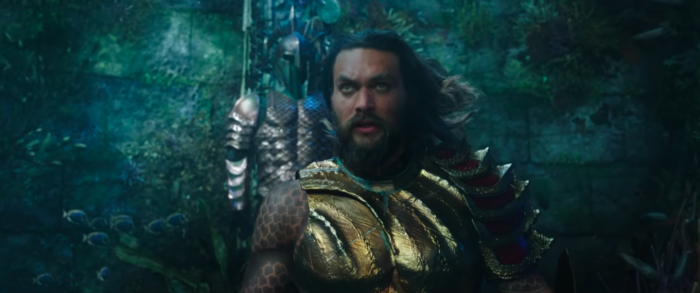
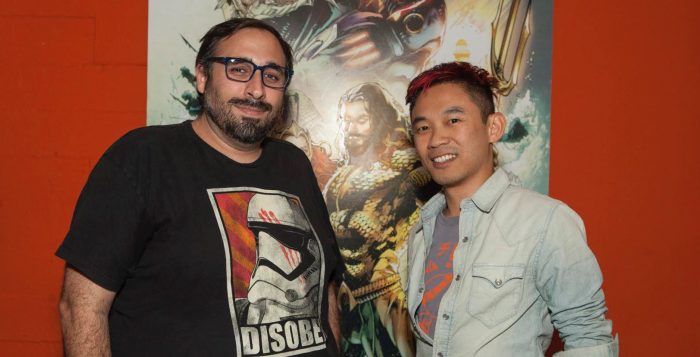
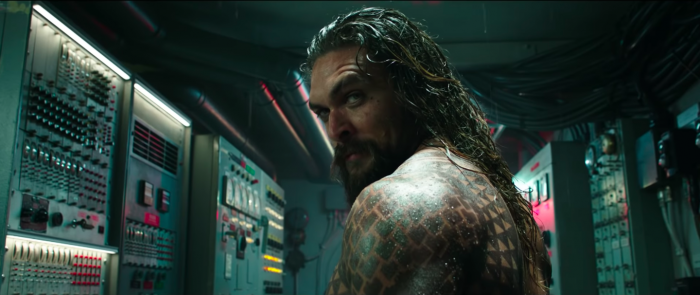
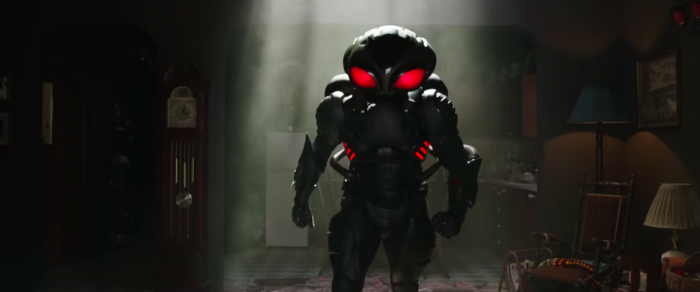
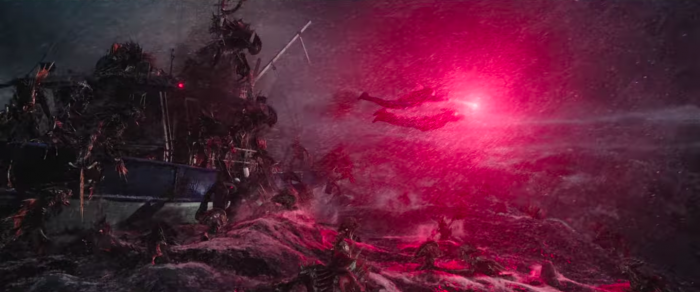


0 Comments